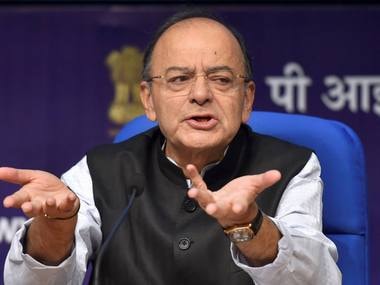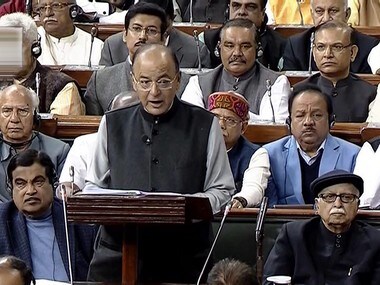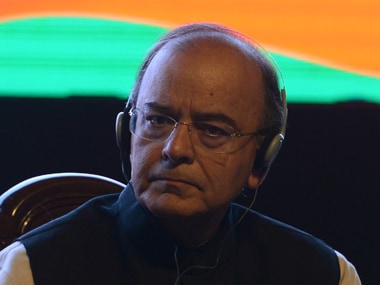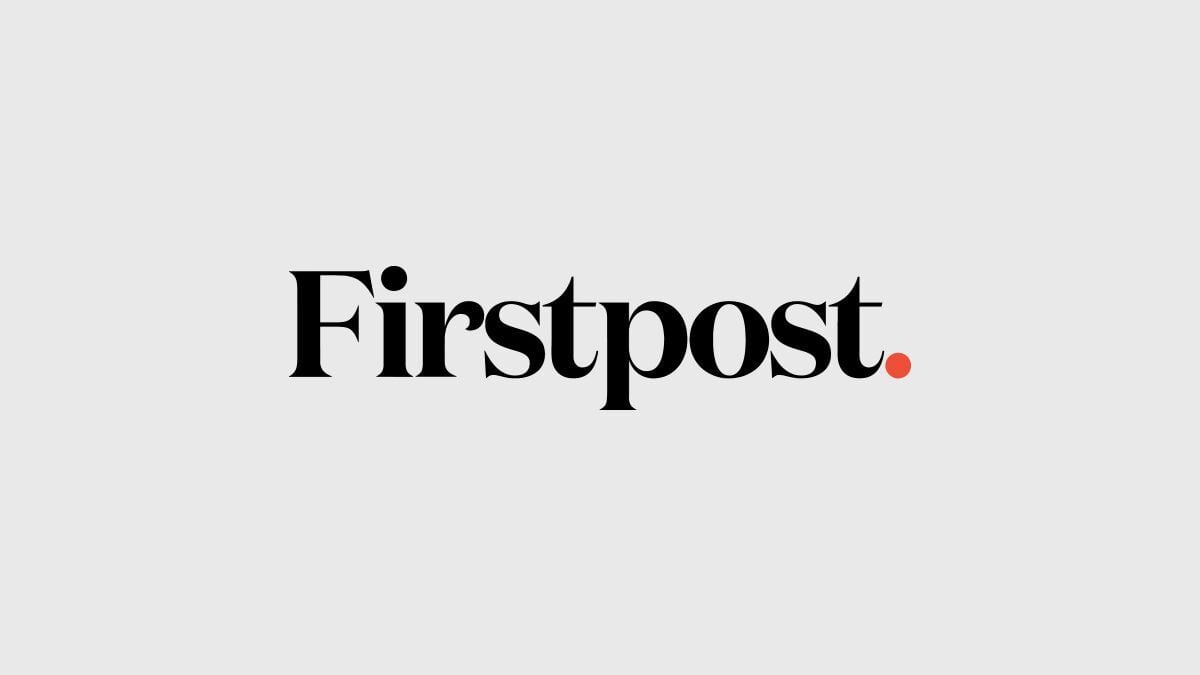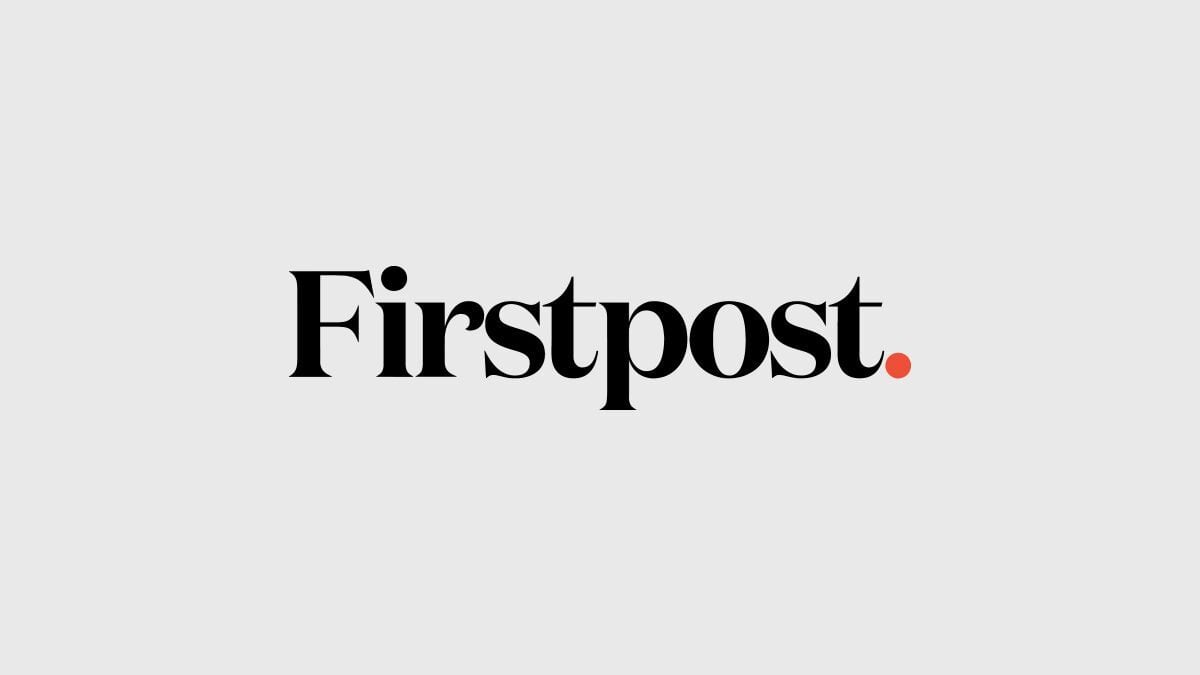By Taruni Kumar
As Finance Minister Arun Jaitley delivered his final full Budget before the 2019 Union elections, the camera panned across the Lok Sabha. One quick glance counted just three women amid a sea of men; there are only 64 women members of Parliament in the 543-member Lok Sabha. So when Jaitley repeated "Madam", while addressing Lok Sabha Speaker Sumitra Mahajan, it seemed a little jarring.
But similar to the task of looking for women in a crowded Parliament is the task of looking for women in the 2018-19 Budget. There is no separate section or segment addressed at women, like in the 2017 Budget, which had made a separate allocation of Rs 1.86 lakh crore for various schemes for women and children across ministries. Or the 2016 Budget, which set Rs 1.56 lakh crore in 2016.
This in itself isn't a problem as long as the Budget takes into account women's needs. But as development economist Dr Jayati Ghosh, professor of Economics at Jawaharlal Nehru University, told The Ladies Finger, "The government sees regressive roles of women in the society."
The Budget too seems to remain status quo-ist in that it assumes that it needs to ease the needs of women as per their current social roles. "It uses a certain lens," says Dr Ratna Sudarshan, trustee and former director of the Institute of Social Studies Trust. "It's not a gender-blind Budget statement, but it recognised women in their present role: Women in the household, what can you do to make them better? 'We want women to work' is definitely an underlying idea but it doesn't look at what prevents them from working and what are the challenges. It's not looking at changing the pattern of development. It's assuming that everyone's (all genders and demographics) needs are the same but it's definitely trying to bring women into the processes of economic growth that are already going on."
Despite this baseline criticism, some feminist economists think that overall, this year's Budget is a positive one for women. The National Health Protection Scheme, the new healthcare insurance scheme announced by Jaitley, aimed at covering 10 crore vulnerable families (which adds up to about 50 crore beneficiaries), stands out as a key step. This was announced as the "world's largest healthcare programme"; it will provide a health insurance cover of Rs 5 lakh per family per annum. The scale of the initiative makes it stand out. This is the new version of the Rashtriya Swasthya Suraksha Yojana (RSSY), the renamed version of the Rashtriya Swasthya Bima Yojana (RSBY).
"I think the idea of the insurance cover for the poverty households is a brilliant and meaningful proposal," says Padma Bhushan awardee, economist and writer Dr Devaki Jain. "When women are ill, very often they are not treated as carefully as men in rural India, but with insurance now, they can go to any private hospital and get the best services because they're covered. That will improve access to health and push for treatment for women even among the rural poor or the urban poor."
Dr Sudarshan said, "The health insurance going up to Rs 5 lakh per household is a huge amount. If implemented properly, they won't just be particularly for women, but they'll also make a huge difference. But I think equally important is the statement that there will be wellness and health centres. Now, the question of implementation is there because we don't know what it'll actually look like in practice, but to the extent that we're recognising the need for distributing health facilities widely and close to the place of residence is a very important point."
But not everyone feels so positively about the healthcare scheme.
Dr Reetika Khera, who teaches Economics at IIT Delhi, said, "If the new healthcare scheme is anything like the RSBY, then it's hardly anything to cheer about, because studies show that RSBY did not reduce out of pocket expenditures for patients. Furthermore, insurance companies and private providers can inflate the costs of tests or procedures. In any case, what is required is not just tertiary care; we need a much larger Budget for preventive healthcare as well."
However, the most condemning criticism comes from Dr Ghosh. "Most of the promises made don't have a budgetary allocation. The sheer audacity of this is alarming. That you can claim that so much will be spent and not put in budgetary allocations. So when you're talking about health insurance for 50 crore people or this massive increase in SC/ST allocation or the huge increase in money spent on rural areas, most of them aren't backed up by the numbers. Instead, they're putting most of this in extra-budgetary or non-budgetary sources."
According a report carried by the fact-checking website factchecker.in, there has only been a 2.7 percent increase in allocations to the health sector: From Rs 53,198 crore in 2017-18 to Rs 54,667 crore this year. In fact, spending on the health ministry has declined to 2.1 percent of the total Budget: From 2.4 percent in 2017-18.
According to the National Health Policy, health expenditure should be 2.5 percent of the total GDP by 2025. Given these numbers, it's difficult to fathom how an expansion of the government health insurance scheme will take place when overall spending has reduced.
Aside from the scheme, she added, "They've cut money on the National Health Mission, which is what employs the ASHAs (Accredited Social Health Activists, who are community health workers working for the Ministry of Health and Family Welfare). There is also very little increase on the Integrated Child Development Services which is for the anganwadis and so on."
There has been a 2.1 percent decline in the allocation for the National Health Mission.
Digging deeper to locate women in the Budget narrative, one wonders how the allocations announced for micro, small and medium industries (MSMEs) are likely to affect women. The finance minister allocated Rs 3,794 crore for credit support, capital and interest subsidy to MSMEs. Last year, the Budget had included tax sops to MSMEs to make them more viable. It reduced tax to 25 percent for companies with an annual revenue of up to Rs 50 crore. This year, the Budget proposed the cutting of corporate tax to 25 percent for companies with an annual revenue of up to Rs 250 crore.
"Now small and medium scale industries, as you go further down the line, are the ones that employ women. It's the self-employed women, self-help groups. All these people are under great stress as they don't get enough credit. Ninety percent of India's GDP and 95 percent of employees in India come from the small industries, and they (the government) is normally pampering the rich. So this is an interesting variation from the normal," Dr Jain said.
Sanitation is also a huge issue for women, especially in the rural sectors, and as Dr Sudarshan pointed out, "We don't know how much the investment into 'Swachh Bharat' is leading to behaviour change. There is different feedback that one gets from the field, but nonetheless, toilets do make a very huge difference to women’s health."
But even as the digging around finds certain potential for positive movement in women's lives, other not-so-positive developments make themselves known. "The Budget for maternity entitlements has actually been reduced. I'm guessing that's because last year's Budget was more or less left unutilised. The required commitment from the Centre is Rs 8,000 crore, while the Budget this year is Rs 2,400 crore. So, even if all of last year's pending funds are added, it's still only Rs 5,000 crore, which is still too little," Dr Khera said.
Dr Ghosh pointed out that some of the schemes have not actually been well thought out. Like the Ujjwala scheme, that provides free LPG connections to families below the poverty line. The scheme was started in May 2016 and 3 crore households have since received access to cooking gas connections. This year's Budget proposes the expansion of the scheme to include 8 crore poor families.
"It turns out so many of the women who are taking it are subsequently not using it because they can't afford to buy cylinders. And this was not taken into account. And they know this. A large number of the women have not gone back and taken the cylinder because you take the original one and when it runs out, then you don’t have the money to go get another one. And yet they're expanding the scheme without this basic thing being thought through," she added.
The hunt to locate the women in this year's Budget yielded mixed results. While some saw our needs catered to, others feel the needs of women play no role in the Budget planning at all. And just as the Budget sees a continuation in the existing roles of women, which are, needless to say, socially suppressed, there seems to be a continuation in the Budget's own proposals as well.
"A lot of this Budget has to do with continuation. If we look at agriculture, women's access to programmes does appear to be through self-help groups which has been the case for a long time so it's not like any new conduit is being created. Apart from health, the other programmes are also already there. I didn't see anything dramatically new in women's role in the economy. It is as perceived," Dr Sudarshan said.
The Ladies Finger is a leading online women's magazine.
Published Date: Feb 03, 2018 16:26 PM | Updated Date: Feb 03, 2018 16:27 PM








